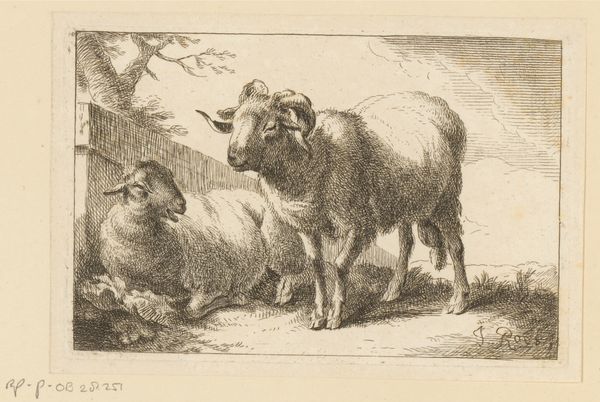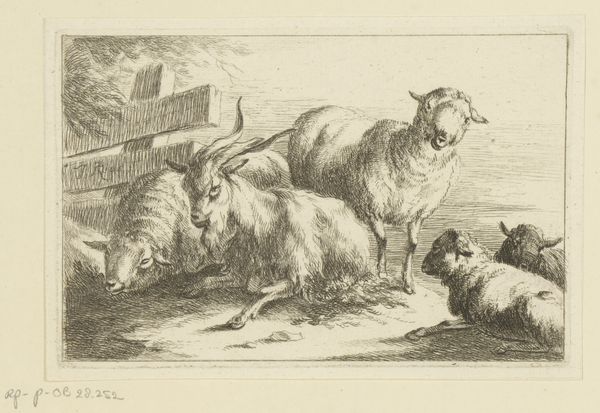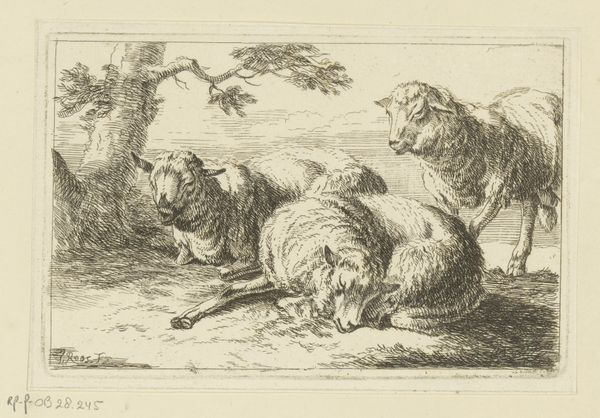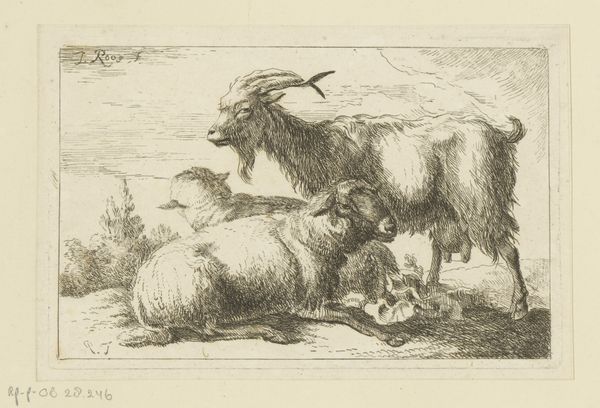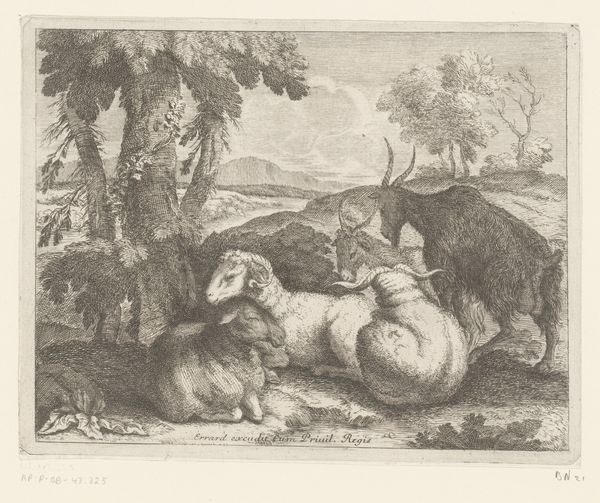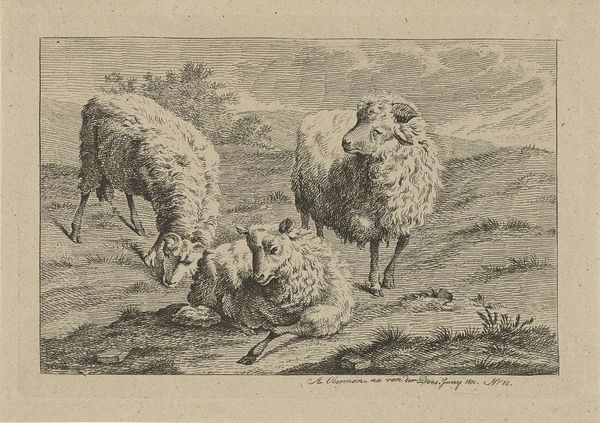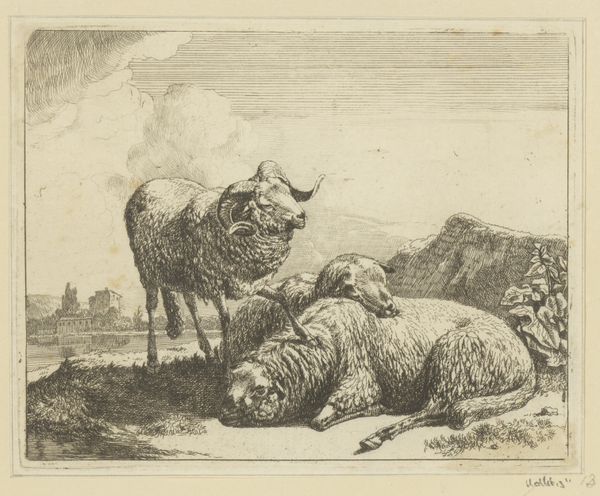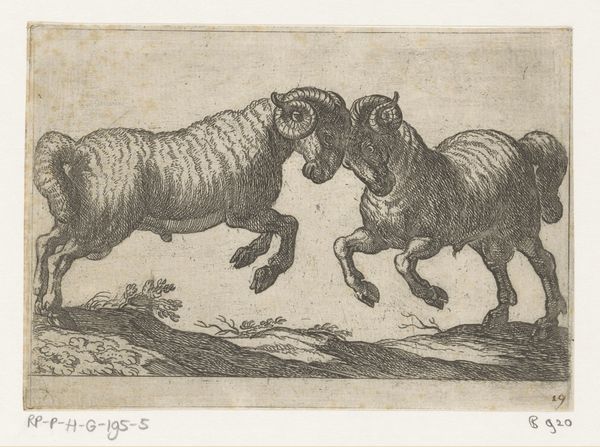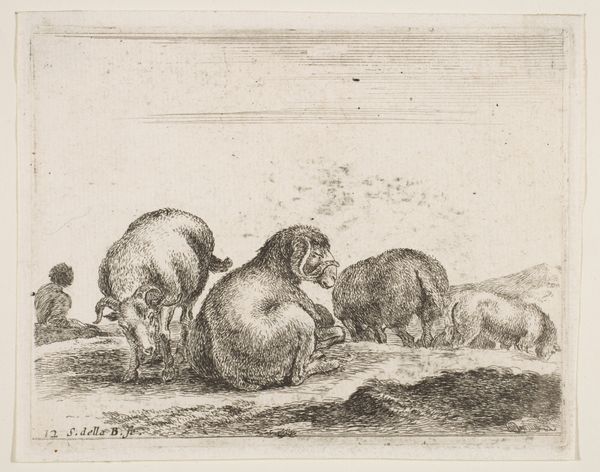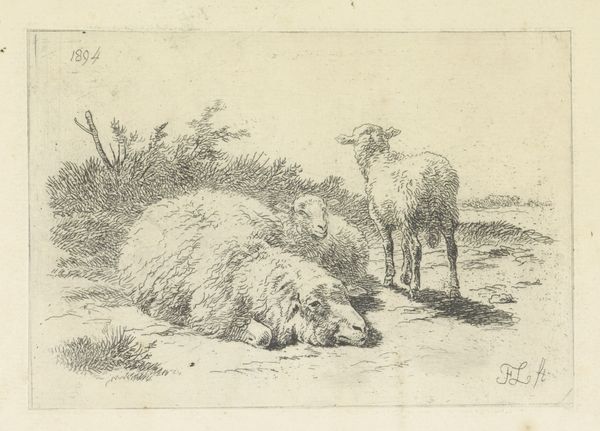
drawing, print, engraving
#
pencil drawn
#
drawing
# print
#
old engraving style
#
landscape
#
figuration
#
pencil drawing
#
romanticism
#
genre-painting
#
engraving
Dimensions: height 110 mm, width 152 mm
Copyright: Rijks Museum: Open Domain
Curator: My first impression is of a tranquil simplicity, almost pastoral. The contrast between the dark and light markings create a strong texture across the surface, but what do you see in it, Editor? Editor: We are looking at "Two Sheep", an engraving dating from 1796-1797, created by Jean Baptiste Huet. It seems quite representative of its time in many ways. Curator: Right, the medium is an engraving which makes me wonder about the accessibility of such images during that era. Engravings allowed for multiples, bringing images to a broader public beyond paintings for the elite. But how did it function in the wider world of art at the time? Editor: During the late 18th century, animal depictions were gaining popularity, fitting into broader trends of Romanticism, valuing nature, and promoting rural ideals. Curator: Thinking about materials and labor, what type of work went into it to achieve such soft details with those marks of the burin? The physicality contrasts nicely with its delicate look! Editor: Yes, indeed! The artist surely needed a sharp understanding of printmaking techniques. These prints would often circulate in albums, educational material, or as decorations. Think about their influence on ideas about rural life. Curator: Certainly! And also their reach into society as a type of visual knowledge, with Huet depicting livestock who in the time period formed the basis of regional economy, but now presented divorced from context of commerce. I like that contradiction. Editor: That makes a fine point and gives another dimension to the picture, beyond what the artwork simply presents on its surface. Curator: This dialogue has made me ponder over that connection to landscape, the impact of industry, and social strata that underpinned those eras! Editor: And I'm glad we managed to view "Two Sheep" under the lenses of art consumption, audience reach, artistic processes, social and historical dimensions. A fruitful exercise, I think!
Comments
No comments
Be the first to comment and join the conversation on the ultimate creative platform.
